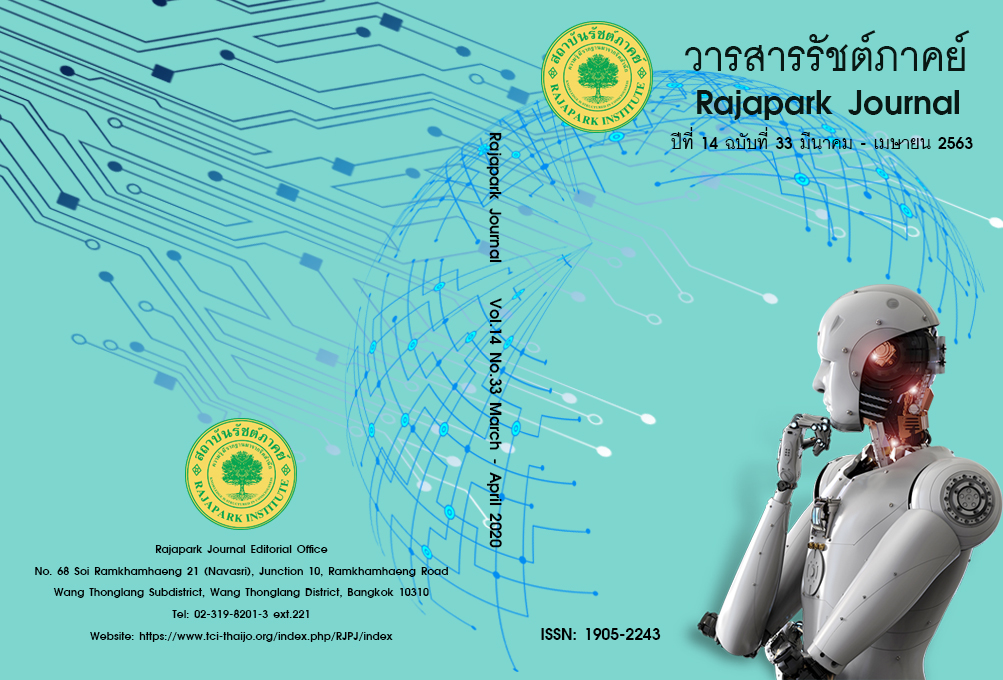The operational effectiveness of the municipality leaders in Thailand
Main Article Content
Abstract
The objective of this research is 1) to study the operational effectiveness of the municipality leaders in Thailand 2) to study the factors that affect the municipality's job positions in Thailand and 3) to use the results to develop the municipality in Thailand efficiently and increased effectiveness data were collected by using questionnaires. Personnel of Khelang Nakhon Municipality Lampang Province, Sila Municipality Khon Kaen Province Tha Khlong Municipality Pathum Thani Province Nong Prue Town Municipality Chonburi Province, Hua Hin Municipality Prachuap Khiri Khan Province, Kuan Lang Municipality, Songkhla Province, representing a total of 277 people. Data were analyzed using statistical values. Mean, standard deviation and multiple regression analysis Statistical significance are determined at the level of 0.05. The results of the study can be summarized as 1) Transformational leadership. In terms of creating good inspirations, the overall is at a high level. The influence which consists of ideology as a whole at a high level In terms of stimulating the use of intelligence at a high level and behaviors focusing on individual relationships at a high level. 2) The effectiveness of the municipality found that the effectiveness of the municipality was at a high level. 3) The effect of the transformational leadership that influenced the effectiveness of the municipality in Thailand is the change leadership in the aspect of creates good motivation (IM) and personal relationship behaviors (IC) with the following equation to predict the effectiveness of the municipality: Municipal = 1.331 + 0.339 (IM) + 0.333 (IC).
Article Details
Views and opinions appearing in the Journal it is the responsibility of the author of the article, and does not constitute the view and responsibility of the editorial team.
References
Barker, D. G. (1992). Changing Social Values in Europe. Business Ethics: A European Review, 1(2), 91-107.
Bass, B. M., & Avolio, B. J. (1995). The four I’s transformational leadership. Journal of European Industrial
Training, 15(2), 9-16.
Bohn, H. (2002). Government asset and liability management in an era of vanishing public Debt. Santa
Barbara: University of California at Santa Barbara.
Boonleaing, S. et al. (2012). Satisfaction of service recipients regarding service quality of local administrative
organizations in Phetchabun province. Retrieved March 14, 2019, from http://human.pcru.ac.th/vijai/vi55.pdf
Chandasuwan, P. et al. (2012). Transformational Leadership, Organizational Culture, Learning Organization and
Effectiveness of Subunits within Stations of Metropolitan Police Division: Path Analysis. Romphruek
Journal, 30(1), 89-116.
Chaum, T. (2015). A Management Effectiveness Model of Sub-District Municipalities in Central Region of
Thailand. Doctor of Philosophy Management Program, Siam University.
Dhiravegin, L. (2007). Evolution of Thai government politics. Bangkok: Thammasat University.
Mayer, R. C., Davis, J. H., & Schoorman, F. D. (1995). An Integrative Model of Organizational Trust. The
Academy of Management Review, 20(3), 709–734.
Puangngam, K. (2003). Thai local government: principles and new dimensions in the future (3rd ed.). Bangkok:
Winyuchon.
Rattanadilok Na Phuket, P. (2007). Leadership and practical guidelines for local administrator under changing
context. Journal of Local Development, 2(1), 121-148.
Reddin, W. J. (1970). Managerial Effectiveness. Tokyo: McGraw-Hill Kogakusha.
Thanaphongsathorn, K. (2008). Key principles of training in the teaching manual Academic of Human
Resource Development in Organization. Bangkok: n.p.
Vinitwatanakhun, W. (2002). Factors affecting organizational effectiveness of nursing institute in Thailand.
Retrieved march 14, 2019, form http://www.journal.au.edu/au_techno/2002/apr2002/article8.pdf
Wirawut, S. (2011). Factors affecting, effectiveness of the primary schools, the Office of Basic Education
Commission. journal of Administration and development, Mahasarakham University, 3(3), 111-126.


